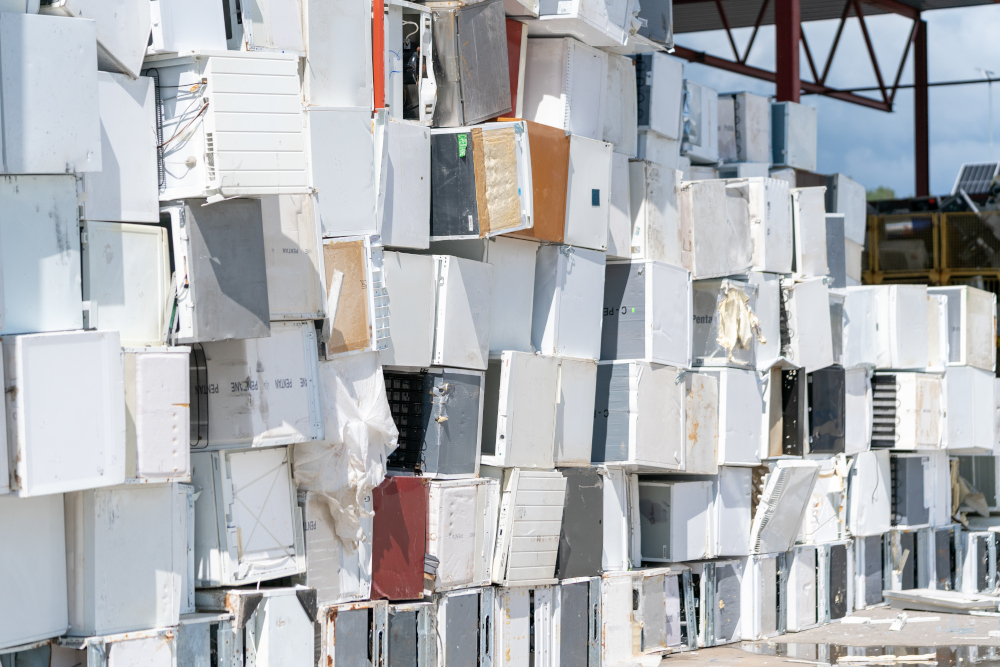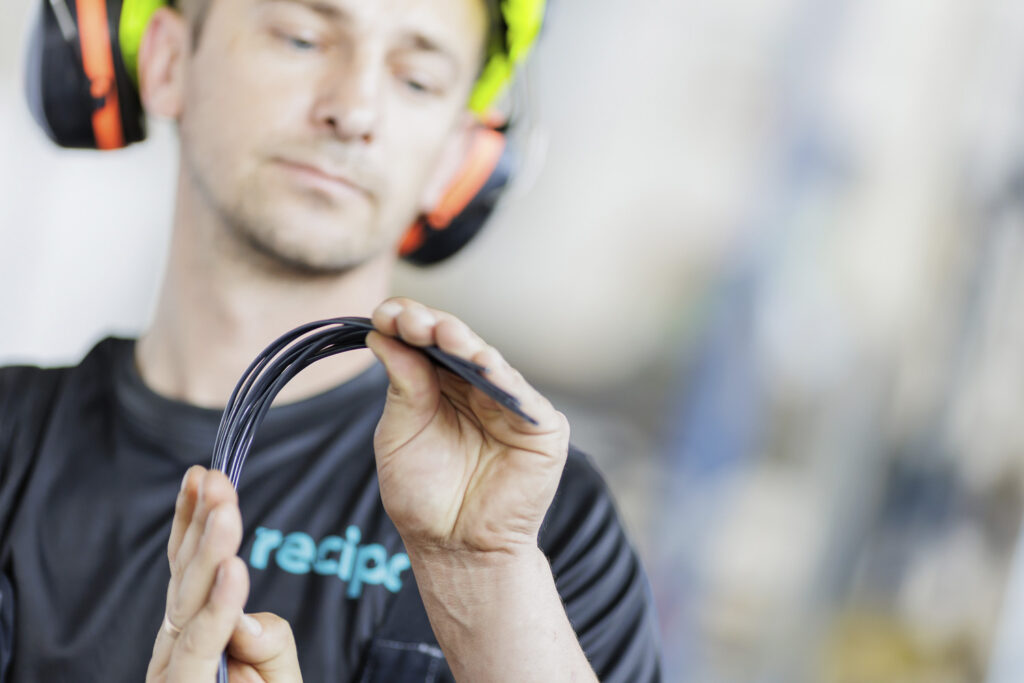Electronics Recycling
Recycling electronics is crucial because these gadgets are packed with numerous components, some of which can be harmful to the environment. At Recipo, we are passionate about showcasing the significance of proper electronic recycling.

Let us take you Through our Innovative Process and Show you how we Handle E-waste Responsibly
To create a more sustainable consumer society, we need to put extra focus on how we recycle everything we buy. Companies need to create products that are easy to recycle and offer simple solutions for customers to recycle old products.
How Electronics Are Recycled at Recipo?
Recipo collects both consumer equipment and professional electronic devices, which we then send to recycling facilities. When the e-waste arrives there, it is handled by their qualified personnel.
Let us explain step by step how our electronics recycling process works:
Step 1
Qualified personnel handle the e-waste upon arrival. The waste is sorted, and hazardous materials (such as mercury and batteries) are separated from the rest.
Step 2
The remaining e-waste is forwarded to demolition stations.
Step 3
Products undergo quality checks to determine whether they can be reused, recycled, or require other treatment.
Step 4
Products are disassembled, and any hazardous substances that slipped through are removed.
Step 5
All components are sorted by material and placed in separate bins or containers.
Step 6
Different materials undergo tailored recycling processes to enable their reuse in new products.

Examples of E-Waste Handling
There are a lot of different methods and processes that can be used in electronics recycling. Here are some examples of how specific products can be recycled at our partners.
Flat Screens
Recycling flat screens is unique due to the presence of environmentally hazardous substances (e.g., mercury).
Our partners use a process that safely manages all types of flat screens, separating hazardous materials from recyclable ones.
High-Value Electronics
Devices like phones and laptops undergo sorting to extract reusable materials.
Hazardous content is manually separated, and the remaining material is preprocessed for optimal recycling.
The different materials are crushed, separated, and sent to various destinations, such as smelters or plastic recycling plants.
This ensures maximum reuse from all electronic items we receive.
Cables
When we receive cables at our recycling facility, they undergo cable granulation.
The resulting copper granules are sent for further treatment, while plastic remnants are separated.
Appliances
Appliances that come in for recycling must undergo careful sorting because much of it contains environmentally hazardous substances. The staff do a manual review to sort out stoves with a risk of asbestos, products with mercury and even some dryers.
If dryers have heat pump technology, they need to be sent for a special treatment for oil and gas extraction. Products containing mercury also undergo a mercury removal treatment.
Frequently Asked Questions
Where can you return old electronics?
Electronics such as computers, phones and the like can be handed in Secure Collect containers that you can find in most Elgiganten stores. Other electronics such as white goods or kitchen appliances can be taken to municipal recycling stations or to companies that sell similar products.
What counts as electronic scrap?
Anything that requires a power outlet or battery to work is considered e-waste. It can be anything from computers, phones and cameras to refrigerators, washing machines and air fryers.
What should you consider when you need to throw away an electronic product?
Remember to first think about whether the electronics are actually broken or if they can be reused. Then you could sell or donate it instead. If it is completely broken, it is important that you do not throw electronics in the household garbage but take them to a recycling center so that both the material and any batteries can be recycled.
